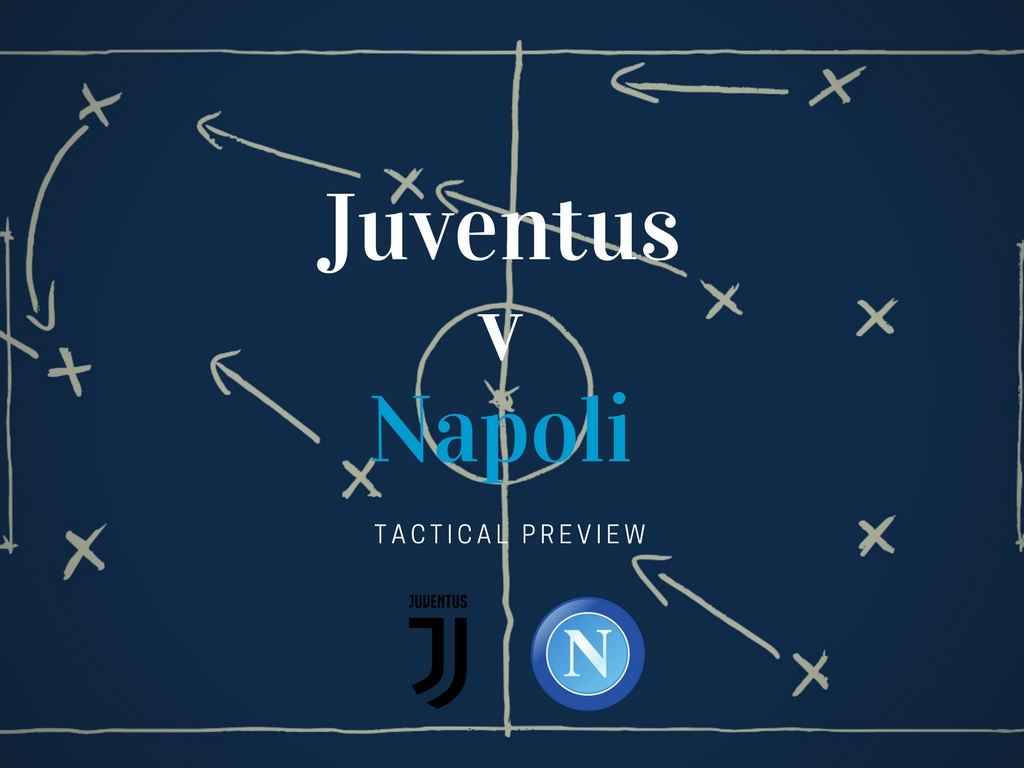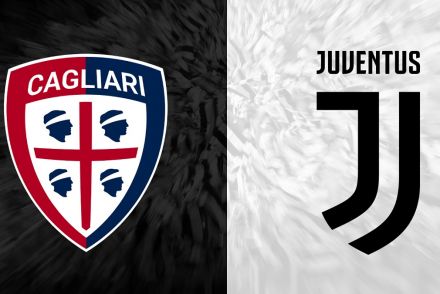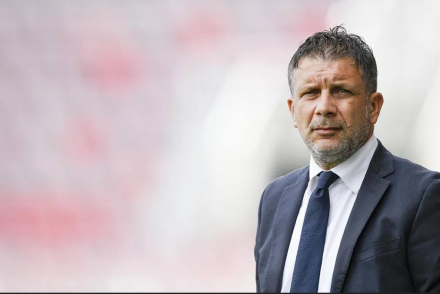The following is a guest post from Kareem Bianchi – Follow him here on Twitter.
The 2017/18 edition of the Italian Serie A has offered an exciting race to the Scudetto, up to this date, nine months after the start of the season, is still at its climax.
Juve-Napoli has now become a Serie A classic, once deemed by Napoli president Aurelio De Laurentiis as the essence of the socio-economic differences between the historically poor South and the rich and powerful North (of Italy).
The two side’s juxtaposition doesn’t simply regard the socio-economic context, but it extends to a vaster and more relevant/ accurate difference involving the clubs’ style of play and management of situations; these diversities are perfectly personified by the two managers: Massimiliano Allegri and Maurizio Sarri.
The two Tuscan gaffers are as diametrically opposed as it gets, from their football principles to their man-management and even , off the field, communication and behavior-wise.
The Livornese is a pragmatic, flexible manager, able to adapt and change depending on the scenario, with a belief in “halma” (tranquility, in English), essentially the management of the various moments and situations throughout the game. Sarri is the complete opposite: a dogmatic coach, that expects his team to impose its philosophy focused on a vertical approach to positional play; the aim is to dictate the rhythm of the game through high intensity pressing and quick and slick one-touch passing to progress up the field after having invited the opposition to press.
Thus far, the encounters between the two managers have always been rousing chess-matches, albeit performing the same tactical act and patterns, and with Sunday’s match possibly being a title-decider, the premises for another enjoyable dispute are all in place.
How do Juventus and Napoli arrive at the game
Form prior to big matches is rarely symptomatic, as teams usually find the mental strength where the physical energy is missing and motivation often exceeds the logic, but notwithstanding the enthusiasm, ignoring the route and results preceding the game would be unwise and even less indicative of the match to come. It’s now common knowledge that Napoli (purposely) lost in all competitions other than Serie A to focus on one objective only and, forced by a restricted squad and lack of rotation from its manager, save physical and mental energy for the league. This plan didn’t however work as expected and Napoli have suffered the worst run of games this season following the first loss in the league since the long-gone Juventus defeat in December, this time at the hands of Roma and have won just three out of the previous seven games while losing one and drawing the remaining three. The leitmotif has seen Napoli perform at a under par intensity, at least compared to what Napoli spectators were used to throughout the course of the season, with lack of lucidity in front of the goal.

The most notable drop has been, however, Napoli’s goal conversion. Sarri’s side have only overperformed xG (Expected Goals: a metric used to measure the probability of a shot converting into a goal by assigning it a value from 0 to 1 based on the shot zone, situation etc.) once in the last six games, underperforming in all the other outings. This is a sign of the aforementioned lack of lucidity in front of goal, which must be added to the struggles at creating chances. What has furthermore been noticeable in recent weeks is the increase of defensive problems: of xGA (Expected Goals Allowed) and goals conceded which amount to 5.6 Expected Goals in six games, thus 0.93 xG per 90 and 9 goals conceded. In Napoli’s previous 27 matches, it had allowed only 0.50 xG/90 and conceded 15 goals. In this period of underwhelming defensive numbers, what’s clear is the reemergence of some of Napoli’s defensive problems from past seasons: besides its difficulties at defending set-pieces, due to the zonal marking method adopted by Sarri’s side (which allows runners to head the ball against a defender jumping from a static situation), the pressing hasn’t always been precise in terms of timing and angles, thus being easily bypassed through switches of play. A frequent theme in Milan’s recent match against Napoli was in fact switches of play after having attracted Napoli’s ball-oriented pressing to one side, to find a player in positional superiority on the opposite flank.

Juventus, on the other hand, despite putting up generally decent numbers in both phases, isn’t as flawless as the results may suggest. For a team to achieve what Juve has this current season, it must mean that it’s having an outstanding season. That isn’t entirely the case for Allegri’s men, and although results may suggest otherwise, performances don’t. It’s now common knowledge that the switch to a 4-3-3/4-4-2 (depending on the individuals composing the formation), was this year’s turning point, as the 3-5-2 was in 2015/16 and 4-2-3-1 in 16/17. Whilst this helped Juve regain some of the missing defensive solidity, it didn’t help adjust all of its problems. Specifically, the bianconeri (regardless of stats), have struggled to maintain compactness against a team capable of sustaining a passing rhythm, inviting players to press and opening space between the lines.

Moreover, Juventus has looked rather vulnerable during high-pressing, stretching its lines and conceding dangerous counters to the opposition.
How will Juventus defend?
Maurizio Sarri and Massimiliano Allegri’s tactical battles always seem to follow the same sketch, mainly due to the fact that the former’s dogmatic style doesn’t allow his team to be unpredictable from a tactical perspective and therefore making Napoli easily read by opposition managers. In the last four encounters, Juve always defended in a compact 4-4-2, focused on maintaining vertical and horizontal compactness in order to congest space between the lines and negate the partenopei’s receiving the ball in the half-spaces and forcing the ball circulation wide. Furthermore the generally low block negated Napoli of the needed depth to finalize their possession.

In the away fixture Juventus started off the game by applying a man-oriented pressing which would see Higuaín and Dybala respectively press Albiol and Koulibaly whilst covering the passing lane towards Jorginho (whom customarily drops ahead of the centre-backs to form a triangle and invite the opposition to press), with Pjanić ready to step out on the Brazilian in case he evaded the cover shadow. Allegri’s team would therefore cut all central passing options and would force Napoli’s circulation to the left-back, where, being the strong side, Douglas Costa and Khedira would aggressively press Mario Rui and Hamšík; this way, Napoli’s build-up would be drawn to the right-side, notoriously the “weak” and less technical flank.
Juve’s pressing against Napoli
Even when defending deep, Juventus never adopted a passive approach and built a tactical confort zone, making Sarri’s side uncomfortable by erecting their defensive wall based on Napoli’s weapons. A testament to Allegri’s accurate preparation to the match is the way he organized Juve’s defence depending on the side in which Napoli’s attack started, without ever becoming passive. Whereas on the right flank Juve would allow Callejon, Hysaj and Allan more time on the ball, it overloaded the left side to negate all of the azzurri’s triangle creations formed by the left-back, left winger and left centre-midfielder and combinations between the lines with specific man-marking instructions and vertical and horizontal compactness.

Allegri’s strategy also revolved around forcing Napoli to cross in the middle, and having only Mertens against two centre-backs adept at defending aerial balls, the mismatch was very clear. It could change, however, if Milik were to start. In the last four games the Polish centre-forward has shown that he gives his side more attacking options, perhaps even due to the tiredness of Mertens, attacking depth more consistently than the Belgian and thus stretching the space between the defensive and midfield line. Besides that, the most obvious attribute addition he’d give Napoli is aerial ability, inevitably forcing Allegri to rethink his strategy; possibly by inviting his team to be more aggressive when shifting.
How will Juventus attack?
Especially at home, Juve’s plot rarely differs in big games. Madama usually begins the match by looking to recover possession immediately and control the initial 10-15 minutes (in the away fixture at the San Paolo Juve averaged 60% of possession in this time frame), seeking a cushion goal to rest on in the remainder of the half. Thus, the outline, particularly if Juve scores, can be easily predicted, with Juve defending positionally in its 4-4-2/4-5-1 (depending on the players) and countering.
To evade Napoli’s aggressive pressing, a typical characteristic of Sarri’s footballing philosophy, Juve could use the same build-up shape adopted at the San Paolo in December. Therefore a 3-2 with the centre-backs wide and on the same line as Buffon, facing Pjanić and Khedira. Given Napoli’s pressing, in which Insigne and Callejon would press the CBs while Mertens marked Pjanic, making Khedira the free man or attracting Hamšík deep (therefore freeing Dybala), this shape stretched Napoli’s lines, creating positional superiority behind the first line of press and allowing the full-backs space and time to carry the ball.

One downside of Juve’s deep defending is that this season it has struggled to progress up the field against good counterpressing sides; it was evinced against Tottenham in the Champions League round of sixteen and whilst Napoli is not as intense and physically proficient as the English side, its positional structure and connection creation along the field allows it to have players in close distances once the ball is lost and therefore to regain possession effectively. Douglas Costa and Dybala’s ball-carrying and technical abilities have often been exploited to evade the opposition pressing and create connections on the right-flank and they might be crucial against this Napoli side, especially to initiate counters, as in the away fixture. However, if Dybala doesn’t feature in place of Mandžukić, the now notorious long balls to the Croatian wide target man could be key to progress quickly up the field, directly from Buffon as well.
What’s paramount is that Juve creates as many qualitative and positional superiority situations as possible, such as Douglas Costa against Mario Rui, who’s not always quick to return to his position, Dybala receiving between the lines aside or behind Jorginho or Mandžukić’s physical mismatch with Hysaj.
Not a decisive game, but a must-win match
“A mini-league made of five matches starts on Sunday and we’re four points ahead of Napoli, therefore the game won’t be decisive because there are other points to obtain in order to win Serie A.” These were Allegri’s words in the pre-match conference. Embraceable words, that are right, however, winning would be a statement not only to Napoli, but to the entire Serie A. Winning would mean putting an end (albeit not mathematically) to the Scudetto race. To “crush” an entire fanbases’ dreams, an entire city’s dreams, a team that has given up everything to win one trophy, that they won’t win. The main motivation for the Juventus players will be to show the rest of Serie A who’s still, after six years of victories, the best side in Italy. It’d be an invaluable achievement, given Napoli’s extraordinary season, to win this year. More than any other year. To win Juventus will have to remain true to their principles, be clinical in front of goal and not have lapses in concentration. The game of the season is ahead of us, and all we have to do is sit back and enjoy a recent years classic.




